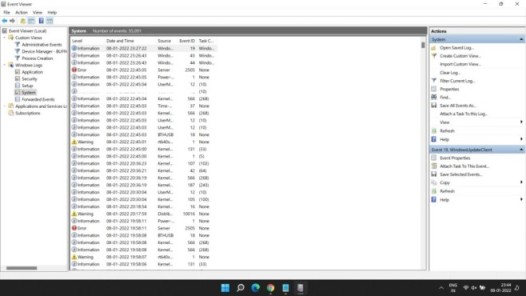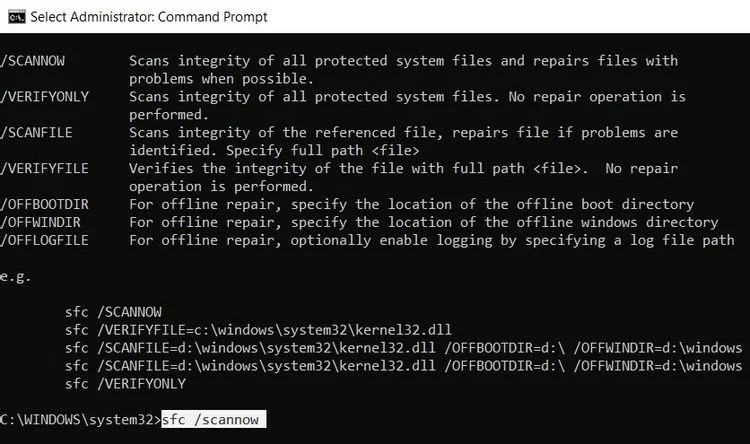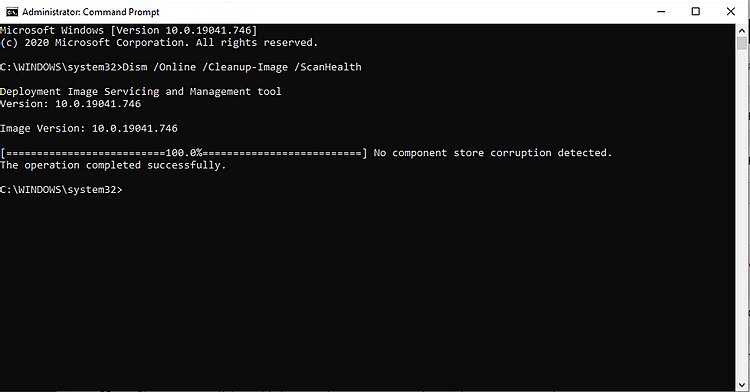The “SYSTEM THREAD EXCEPTION NOT HANDLED” is a typical Windows 10 problem. This happens because of an outdated or incompatible driver. This Blue Screen of Death might show up after you boot your PC. It might require ten to fifteen seconds before the PC runs into the error that is causing the notorious BSOD. What makes it trickier to fix than other BSODs is that various drivers can cause the issue. But now your PC may not identify them all.
What is “System Thread Exception Not Handled”?
SYSTEM THREAD EXCEPTION NOT HANDLED is an error that shows up on a Blue Screen of Death (BSOD). And the process threads running basic Windows services issues. Users of Windows 8, 8.1, and 10 have mostly described this error. While a few users get 10 to 15 seconds before they get this error. Others have revealed promptly getting this error after their windows start. Afterward, their system reboots, getting stuck in a loop, making it impossible for them to use any PC. This mistake primarily happens because of a driver glitch. An obsolete, corrupted, or incompatible driver can get your computer to show this blue screen. The error occurs because of mostly outdated and incompatible drivers.
When and Why Does this Error Occur?
The “system_thread_exception_not_handled” error basically happens when you boot the PC or restart. Also, it can happen inconsistently and mainly when the user executes a program that requires definite graphic drivers to work. This error occurs when the PC has incompatible drivers installed (most regularly graphic drivers). Malware can also control graphic drivers and is also wrongly installed. Maybe that’s why you would get the “system_thread_exception_not_handled” on Windows 10.
How to Resolve this Error?
Table of Contents
Method: 1 – Find the Faulty Driver

- On your keyboard, hit the Windows key + R to pull up the “run” dialogue box.
- Enter in “eventvwr” into the box and hit okay.
- Head down to where it says “Windows logs” and click to have the menu drop-down.
- Click on “system” within this drop-down menu to view all recent events.
- Find the “system_thread_exception_not_handled” error and see which driver it is associated with.
Method: 2 – Update, Rollback, or Reinstall the Drivers

Open the device manager by typing “device manager” into your PC’s search. Or by hitting the Windows key + X and choosing “device manager”.
1. Update the Drivers
- Explore to the related driver and extend the menu.
- Right-click on the driver and click on Update driver.
- In the dialog box, click on Search automatically for updated driver software.
- Windows will then, automatically scan the web for the most recent drivers and install them.
2. Rollback the Drivers
- Open Device Manager and explore to the driver.
- Expand the menu and right-click on the driver.
- Click on Properties.
- Under the Driver tab, click on Roll Back Driver.
- Windows will consequently rollback to the last available version of the driver.
3. Reinstall the Driver
- You should uninstall the driver first.
- You will then, need to go to the driver manufacturer’s site, track down your driver there, and download the latest driver for that device and install manually.
Method: 3 – Rename the Driver
Assuming you have a file name related to the “system_thread_exception_not_handled” error. Then, you can generally rename the driver to something different. Now, windows will get another duplicate of it and reinstall it.
- Open up the command prompt app by searching “command prompt” or type “cmd“ in your computer’s search boxc.
- Type into the command prompt box, cd C:\windows\system32\drivers (hit enter) ren FILENAME.sys FILENAME.old (replace filename here with the faulty driver file listed with the error code).
- Then type “exit” and restart the computer.
Method: 4 – Repair the System Files
1. Use SFC to repair the files.

- In the Start menu search bar, type cmd then right-click on Command Prompt and run it as an administrator.
- In the console, enter sfc/scannow.
- Be patient as Windows will take time to scan and replace corrupt system files.
2. Use DISM to Restore the Health of PC.

- Open up the command prompt as administrator and type in the following one by one.
- Exe /Online /Cleanup-image /Scanhealth
- Exe /Online /Cleanup-image /Restorehealth
Method: 5 – Restore the PC to an Earlier Point

If there are backups of your PC, you can restore it to a point when you were not getting the error. Follow these steps:
- Insert the system repair disc into the computer and choose your language preference.
- Click on the repair option and choose to troubleshoot, advanced options.
- Then choose system restore and follow the instructions given.





![TamilRockers Proxy: Unblock TamilRockers [All New Working Links 2021] Tamilrockers-proxy](https://www.techontable.com/wp-content/uploads/2021/01/Tamilrockers-proxy-100x70.png)
